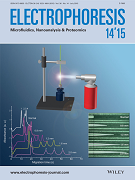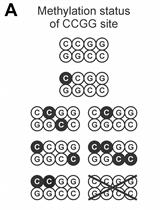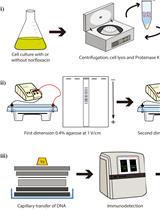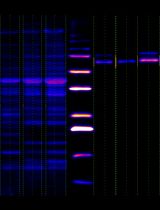- EN - English
- CN - 中文
Capillary Electrophoresis in Hydroxyethylcellulose Solutions for the Analysis of dsDNA, dsRNA, and siRNA
毛细管电泳法分析羟乙基纤维素溶液中的dsDNA、 dsRNA 和 siRNA
发布: 2016年08月05日第6卷第15期 DOI: 10.21769/BioProtoc.1894 浏览次数: 9849
评审: Samik BhattacharyaAmit DeyAnonymous reviewer(s)
Abstract
Capillary electrophoresis (CE) is identified as a promising technology for the study of nucleic acid molecules because of its high efficiency, high throughput with automation and integration. Compared to the traditional method of slab gel electrophoresis (SGE), the advantages of CE cannot be emphasized more. Most of CE process, including sample injection, detection and data analysis, is able to be automated which will save great labor for industrial and research labs. CE used the separation channel with micrometer-scale diameter, so the joule heat is easy to be dissipated during electrophoresis. Thus high separation voltage (> 100 V/cm) is allowed in CE while in SGE (usually ~10 V/cm) it usually causes severe band broadening. Because the band broadening is restrained efficiently in CE, it is capable of detecting minute samples and becoming more sensitive than SGE. The advantage of allowing high voltage consequently speeds up the CE separation and yields a better throughput compared to SGE. CE costs less reagents, for example buffer solutions, sieving matrix, dye reagents etc. In addition, the micrometer-scale channel is easy to be integrated with upstream and downstream sample treatment units, forming a lab on a chip. This merit of CE already attracted considerable interests among researchers from various areas.
The difficulties of CE involve filling the gels (agarose or cross-linked polyacrylamide) into the capillary tube. Also, the reproducibility and the life-time of the gel-capillary are limited. But the small-diameter capillary allows to use replaceable polymer solutions, which can efficiently prevent the convection of the separation buffer. Polymer solutions are easier to be filled into the capillary and yield more stable separations. Thus, those difficulties are resolved by doing capillary polymer electrophoresis (CPE), which is going to be described in this protocol.
Several separation modes, for example, capillary gel electrophoresis (CGE), CPE, capillary zone electrophoresis (CZE), capillary isotachophoresis (CITP) and so on, have been developed for analysis of different kinds of molecules. Here, we introduce the protocol for CPE in detail, which is for the separation of dsDNA, dsRNA (including siRNA) molecules. Polymer solutions are filled into the capillary as a sieving matrix for double strand nucleic acids separation. Hydroxyethylcellulose (HEC) polymer is employed as the sieving polymer in this case. A home-built CE system is described in detail.
Materials and Reagents
- Micro-centrifuge or PCR tube (200 μl)
- Pipettes (0.1-10 μl and 10-200 μl) and the corresponding tips
- 0.22 μm filter membrane
- dsDNA analytes (Takara, catalog number: 3420A )
- dsRNA (including siRNA) analytes (Takara, catalog number: 3430 )
- Ultra-pure water, with resistance of 18.25 Ω
- 2-hydroxyethyl cellulose (MW: 1,300k) (Sigma-Aldrich, catalog number: 434981 )
- TBE (Tris-borate-EDTA) powder (Takara, catalog number: T905 )
- SYBR Green II RNA Gel Stain, 10,000x concentrate in DMSO (Thermo Fisher Scientific, catalog number: S-7564 )
- Storage 1% HEC polymer solution (see Recipes)
- 0.5x TBE solution (see Recipes)
- 100x SYBR Green II (see Recipes)
Equipment
- Home-built CE system (Figure 1) which includes:
- A coated fused silica capillary with a detection window (Polymicro, catalog number: TSP075375 )
- A high voltage power supplier (see Note 8)
- A fluorescence microscope assembled with a fluorescent excitation equipment (Equipment 1d) and a fluorescent emission collection equipment (Equipment 1e) (Olympus, model: IX73 )
- The fluorescent excitation equipment constituted by a mercury lamp and an optical cube, which was used to transmit light from the mercury lamp into 460-495 nm fluorescence excitation spectrum (Olympus, model: U-MWIB3 )
- The fluorescent emission collection equipment constituted by an optical filter and a photomultiplier tube (PMT) (Hamamatsu Photonics, catalog number: H8249-101 , for alternate H7827-001)
Note: The optical filter transmits the emission spectrum from dye-nucleonic acid conjugate to the PMT and filters background light from the detection window. - The home-built CE system including a Labview system (National Instrument, model: NI USB 6212 ) and a computer
Note: Users are able to control the high voltage supplier, monitor fluorescent signal from the detection window and collect data from PMT by the LabVIEW software. - Vacuum pump (see Note 9)
- Centrifuge (> 3,200 x g)
- Ultra-pure water system (see Note 10)

Figure 1. Schematic diagram of the assembly of the CE system
Software
- LabVIEW software
Procedure
文章信息
版权信息
© 2016 The Authors; exclusive licensee Bio-protocol LLC.
如何引用
Liu, C., Yamaguchi, Y. and Dou, X. (2016). Capillary Electrophoresis in Hydroxyethylcellulose Solutions for the Analysis of dsDNA, dsRNA, and siRNA. Bio-protocol 6(15): e1894. DOI: 10.21769/BioProtoc.1894.
分类
分子生物学 > DNA > 电泳
分子生物学 > RNA > 电泳
您对这篇实验方法有问题吗?
在此处发布您的问题,我们将邀请本文作者来回答。同时,我们会将您的问题发布到Bio-protocol Exchange,以便寻求社区成员的帮助。
Share
Bluesky
X
Copy link













